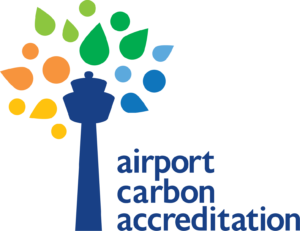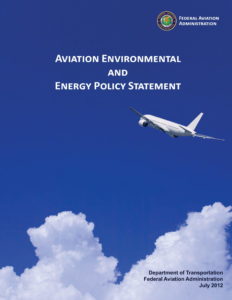



 Constantly raising global awareness of aviation’s contribution to the climate crisis forces changes in airports and airlines attitudes towards the environmental friendly approach and changing its airport sustainability strategies.
Constantly raising global awareness of aviation’s contribution to the climate crisis forces changes in airports and airlines attitudes towards the environmental friendly approach and changing its airport sustainability strategies.
In 2018 air transport generated 895 million tons of carbon dioxide. According to the Intergovernmental Panel on Climate Change (IPCC) air transport contributes to 4.9 % of human-caused climate change, including emissions of carbon dioxide and other greenhouse gases. Aviation industry is also responsible for 12% of CO2 emissions from all transport sources.
At the same time, in 2019 global air traffic passenger demand increased by 4.2 percent on the year before. Which means more flights and expansions of airports were and are constantly needed. But as much airlines and airports expand their business, as much more energy is required to power new terminals, runways, ground transport vehicles and the creation of infrastructure.
In recent years many environmental organizations, as well as aviation agencies, have pointed out how the aeronautics industry has an impact on the environment and how badly new initiatives are needed. In response to the aviation environmental issues a new trend of ‘flight shaming’ occurred. Its aim was to discourage air travel and by that to reduce carbon emissions.
Among many issues regarding aviation’s disastrous impact on the environment should be mentioned:
As the environmental issues could no longer be overlooked, international aviation organizations stepped in and provided programs and regulation with the main aim in reducing environmental impacts while helping maintain high, stable levels of economic growth.
 Airport Carbon Accreditation is the international programme launched by European airports’ trade body ACI EUROPE at the Annual Congress in 2009. It is a global initiative for airports, extending beyond hubs and regional airports with scheduled passenger traffic, to include general aviation and freight-focused airports.
Airport Carbon Accreditation is the international programme launched by European airports’ trade body ACI EUROPE at the Annual Congress in 2009. It is a global initiative for airports, extending beyond hubs and regional airports with scheduled passenger traffic, to include general aviation and freight-focused airports.
Airport Carbon Accreditation is the only institutionally-endorsed, global carbon management certification programme for airports whose airport-specific carbon standard relies on internationally recognized methodologies. It independently assesses and recognizes the efforts of airports to manage and reduce their carbon emissions through levels of certification. The level depends on the current stage of airport environmental impact and its carbon management. There are six levels of certification:
 Federal Aviation Administration – In 2011 FAA began a pilot program whose main goal was to make sustainability a core objective in airport planning.
Federal Aviation Administration – In 2011 FAA began a pilot program whose main goal was to make sustainability a core objective in airport planning.
In 2012 FAA published the Aviation Environmental and Energy Policy Statement which identifies and reaffirms its commitment to environmental protection that allows sustained aviation growth. The FAA’s Environmental Policy & Guidance is constantly being updated and revised.
FAA run programs such as the Noise Compatibility Program and Voluntary Airport Low Emissions (VALE) Program help airports achieve these goals. Airport sustainability plans take these efforts a step further by fully integrating sustainability into airport planning.
 International Civil Aviation Organization – Every three years ICAO revises and updates its policies and practices related to environmental protection. The ICAO Council also adopted a Strategic Objective on Environmental Protection, which is to minimize the adverse environmental effects of civil aviation activities.
International Civil Aviation Organization – Every three years ICAO revises and updates its policies and practices related to environmental protection. The ICAO Council also adopted a Strategic Objective on Environmental Protection, which is to minimize the adverse environmental effects of civil aviation activities.
European Union Aviation Safety Agency – one of EASA’s mission is to achieve a high uniform level of sustainability and reducing airport environmental impact. This includes lowering noise, improving air quality and mitigating climate change. Among other activities EASA provides ‘European Aviation Environmental Report’ that provides an accurate source of information on the environmental performance of the aviation sector in Europe.
Building Research Establishment Environmental Assessment Method. BREEAM is an international standard that can be adapted to suit the needs of any building type including airports. It provides a certification process whose main goal is to influence decision making on architectural projects in order to enable the delivery of better sustainability outcomes.
The Civil Engineering Environmental Quality Assessment and Awards Scheme – CEEQUAL is the sustainability rating scheme for infrastructure that aims to improve sustainability for civil engineering projects. It is used also in the civil and military aviation sectors to assess a wide range of airport facilities, including runways, taxiways, river diversions, car parks and other operational assets.
 In response to increasing pressure regarding the aviation industry’s environmental impact together with pro-ecological law and regulations, a lot of airports decided to go green. Sustainable airports around the world have embraced the need for greater energy efficiency while bringing down the harmful emissions of carbon dioxide and reducing environmental impact and costs.
In response to increasing pressure regarding the aviation industry’s environmental impact together with pro-ecological law and regulations, a lot of airports decided to go green. Sustainable airports around the world have embraced the need for greater energy efficiency while bringing down the harmful emissions of carbon dioxide and reducing environmental impact and costs.
Thanks to these initiatives despite passenger numbers constantly increasing at an average of 5% each year, the aviation sector has managed to lower its emissions growth to around half of that.
It is visible that the aviation sector understands its impact on the environment and making progress in reducing its environmental footprint.
The global movement of sustainability manifests itself in new investment in green technology and coordinated action to execute new procedures and infrastructural measures. The environmentally friendly design and operation of airport buildings and infrastructure provide opportunities to reduce impacts and demonstrate the commitment to more sustainable practice. Among the most important directions should be mentioned:
 solar airports
solar airportsAirport sustainability initiatives that can reduce the impact on the environment not only will reduce carbon emissions and associated costs, but also will add a real value to the airport reputation as a responsible organization. The model of green airport involves sustainable development of the airport by providing environmental protection and energy efficiency during the all-life cycle of an airport.
 More and more airports decide to operate based on the idea of a green airport that combines airport-resource-economy-environment in one system. These airports want to operate in a manner that is as energy-efficient, resource-saving and environmentally-friendly as much as possible. Here you can find six examples of airports to decide to go green.
More and more airports decide to operate based on the idea of a green airport that combines airport-resource-economy-environment in one system. These airports want to operate in a manner that is as energy-efficient, resource-saving and environmentally-friendly as much as possible. Here you can find six examples of airports to decide to go green.
Boston Logan International Airport – The Boston’s airport terminal won the world’s first Leadership in Energy and Environmental Design accreditation. Terminal roofing and pavement surfaces were designed to reflect heat from the building. Moreover, thanks to repaving one of the airport’s runways with environmentally friendly asphalt allowed a reduction of 2,000t in carbon emissions during the course of the project.
India’s Cochin International Airport – it is the world’s first solar airport. Cochin airport’s solar power plant is producing 50,000 to 60,000 units of electricity per day to be consumed for all its operational functions, which technically make the airport ‘ absolutely power neutral
Galápagos Ecological Airport – the airport was designed to run completely on solar and wind power, with 65% of total energy supplied by windmills and 35% coming from photovoltaic panels fitted on walkways.
Stockholm Arlanda Airport – It’s the first European airport to achieve carbon neutrality in 2009. To save electricity it uses a unique biofuel system to heat its terminals, hangar and airfield buildings. Thanks to the implementation of low-power LED lighting, Stockholm’s airport was able to cut its energy use by almost a third in the period from 2005-2012.
Zurich Airport – the airport decided to go with solar energy and reduced its carbon emissions by approximately 30% since 1991 and aims to cut its CO2 emissions to zero net by 2050. The Swiss airport also uses sustainable fuel in vehicles and machines, which brings it closer to achieving climate targets.
Denver International Airport – it is the second-largest airport by size in the whole world, and it features the largest solar power farm at a commercial airport in the US. In its strategy, Denver Airport considers the long-term economic, social, and environmental impacts of all airport activities.
Solar energy is the way the airport can improve their environmental performance and bring the aviation industry closer to its sustainability goals. Solar power is one of the renewables constantly growing in demand by the aviation industry. Following a year of stable demand, the solar PV market increased by 12% in 2019 to a record 115 GW (direct current), for a total of 627 GW. The installation of photovoltaic solar farms and switching to solar-powered electrical equipment – such as runway lighting – can provide a secure and environmentally friendly energy source. Going solar allows airports to cover the main part of the annual electrical energy needs and reduce carbon dioxide emission.
S4GA solar systems are cost-effective carbon-free airfield lighting solutions applicable for all types of airports. S4GA lighting system is compliant with ICAO requirements and meets the highest environmental standards available in the aviation industry. S4GA LED runway lighting is designed to operate 365 days using only solar energy. It is possible with rapid charging technology that is used in S4GA airfield lights.
The key element of S4GA System is the SP-401 airfield light – a self-contained lighting unit designed to operate 365 days on solar energy. It is equipped with a solar panel that generates energy, a built-in power bank that stores energy, and LED optics that consumes energy when turned on.
S4GA solar airfield lighting is the only AGL in the World that operates continuously on solar energy regardless of the weather, location or season of the year.
To provide the maximum safety and efficiency of the S4GA solar lighting system, it has 5-level protection against system failure:
A distributed power source that provides a guarantee of full reliability of the whole lighting system regardless of the failure of its individual components
Solar runway lighting systems are becoming more and more popular among not only regional and domestic airports but at international airport hubs. For now, more than 500 airports went solar and now use solar runway lighting as a primary illumination on their airfields. International airports are following this trend by adaptation of solar airfield lighting as a backup solution (check Thessaloniki Airport case study) or going to a hybrid power supply system. Solar airports are getting global recognition as sustainable and innovative pioneers in environmentally friendly technology. S4GA has delivered over 150 airfield lighting systems to civil and military customers in more than 50 different countries. Check S4GA cases studies here.
Solar runway lighting helps to achieve airport sustainability. It not only reduces airport environmental impact by CO2 emissions completely but also increases the safety of airport flight operations and allows airports to save money on electricity. The key benefits of S4GA solar airfield lighting are: